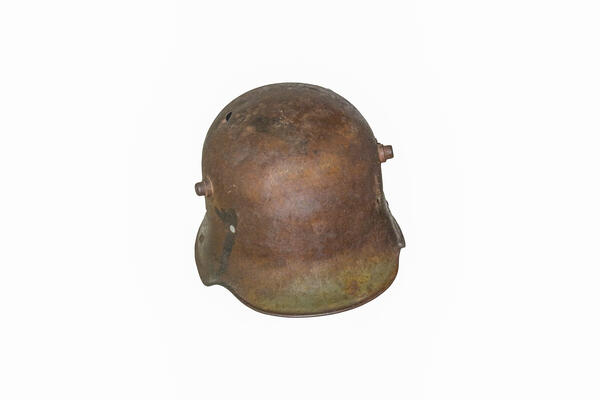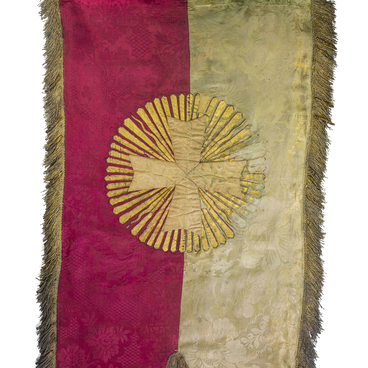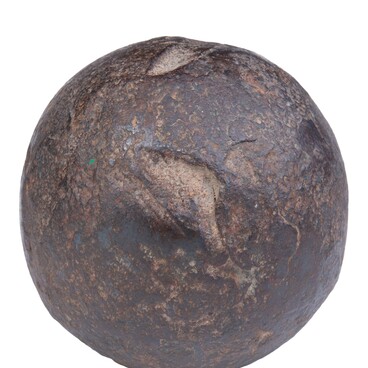The stahlhelm was a steel helmet worn by the German infantry from 1916 to 1945.
During World War I, stahlhelm replaced high and uncomfortable pickelhelms, which showed a soldier’s position during trench warfare. Later these helmets became one of the most recognizable attributes of the Wehrmacht soldiers.
In 1915, Germans produced many helmets of different shapes, tested them at proving ground, and made technical requirements for their shape, metal thickness, and weight.
At first, the German army was supplied with slightly modified pickelhelms, produced in wartime conditions. They were made not of leather, but of thin metal sheets and pressed cardboard. However, their protective capability was considered low.
Later, in the same 1915, the Storm Battalion of Ernst Rohr fighting on the Western front was supplied with the first steel helmets. The observers, sentinels, and snipers were equipped with the next batches.
Dr. Friedrich Schwerd of the Technical Institute of Hanover designed the stahlhelms. By the beginning of 1916, the first samples began to arrive en masse in the army. The helmet covered the head and protected the ears from fragments and the sound wave. Small “horns” on the sides were designed to fix additional steel protective plates. However, they were rarely used, as they were too heavy. There was also a hole for ventilation on the side. However, the soldiers had to seal it with materials at hand in cold weather.
Stahlhelms were made of nickel steel. The inner part was sewn from three leather pieces, so its size could be changed. A strap was attached to the metal outer part and fastened under the chin.
During World War I, the first means of camouflaging stahlhelms appeared. To make the helmets unseen for the enemy snipers, they were specially dirtied or covered with homemade gunny sack covers. In 1917—1918, soldiers at the front often applied camouflage paint with a geometric pattern to their helmets themselves.
During World War I, stahlhelm replaced high and uncomfortable pickelhelms, which showed a soldier’s position during trench warfare. Later these helmets became one of the most recognizable attributes of the Wehrmacht soldiers.
In 1915, Germans produced many helmets of different shapes, tested them at proving ground, and made technical requirements for their shape, metal thickness, and weight.
At first, the German army was supplied with slightly modified pickelhelms, produced in wartime conditions. They were made not of leather, but of thin metal sheets and pressed cardboard. However, their protective capability was considered low.
Later, in the same 1915, the Storm Battalion of Ernst Rohr fighting on the Western front was supplied with the first steel helmets. The observers, sentinels, and snipers were equipped with the next batches.
Dr. Friedrich Schwerd of the Technical Institute of Hanover designed the stahlhelms. By the beginning of 1916, the first samples began to arrive en masse in the army. The helmet covered the head and protected the ears from fragments and the sound wave. Small “horns” on the sides were designed to fix additional steel protective plates. However, they were rarely used, as they were too heavy. There was also a hole for ventilation on the side. However, the soldiers had to seal it with materials at hand in cold weather.
Stahlhelms were made of nickel steel. The inner part was sewn from three leather pieces, so its size could be changed. A strap was attached to the metal outer part and fastened under the chin.
During World War I, the first means of camouflaging stahlhelms appeared. To make the helmets unseen for the enemy snipers, they were specially dirtied or covered with homemade gunny sack covers. In 1917—1918, soldiers at the front often applied camouflage paint with a geometric pattern to their helmets themselves.



